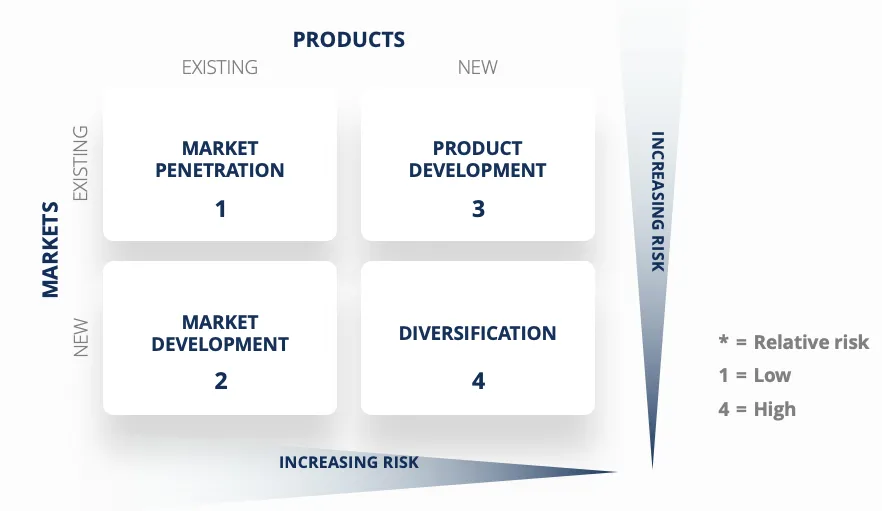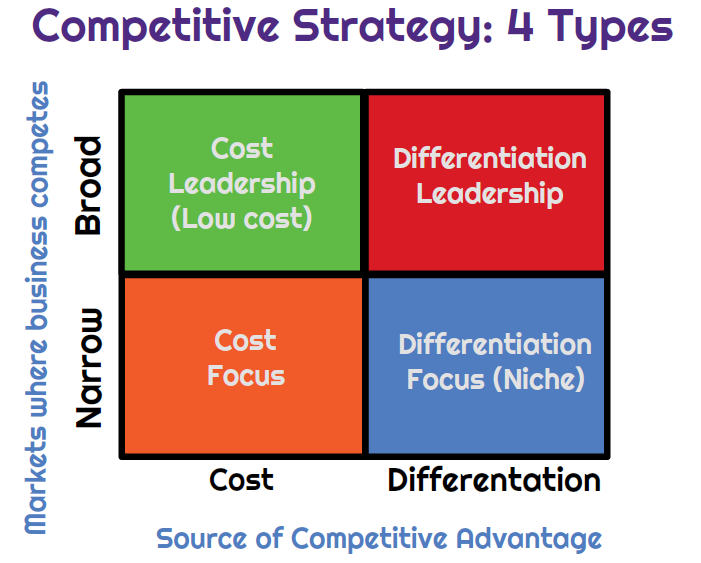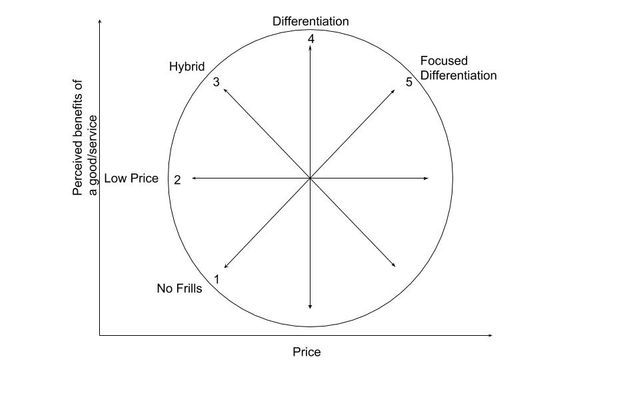3.8 - Choosing strategic direction
1/15
There's no tags or description
Looks like no tags are added yet.
Name | Mastery | Learn | Test | Matching | Spaced |
|---|
No study sessions yet.
16 Terms
4 components of Ansoff Matrix
1) Market penetration - developing strategies to boost sales of existing products in existing markets.
2) Market development - offering existing products but targeting new market segments
3) New product development - developing new products for existing customers
4) Diversification - new products to new customer groups

What is strategic positioning
How a business is perceived relative to other businesses in the industry
Components of Porter’s competitive strategy
1) Cost leadership strategy - achieving lower costs than rivals in the same industry
2) Differentiation strategy - offering more benefits than rivals in the same industry

Ways to achieve a cost-leadership strategy
Lower input costs - e.g owning suppliers
Economies of Scale - be able to spread fixed costs over more units if the business is big enough
Experience - managers and employees being more experienced than rivals enables them to source cheaper materials and make more effective decisions
Products/process design - product design more efficient than competitors
Differences between Porter’s strategies
1) Cost leadership with parity - charging same price as rivals but lower costs so higher profit margin
2) Cost leadership with proximity - having lower price than rivals but costs are lower so can still make same or higher profits
3) Differentiator - charge higher price and still make high profit margin if additional charge for added benefits is more than cost of providing them
Influences on a positioning strategy
1) Where competitors are positioned
2) The external environment
3) Strengths and competences of the business
Ways to protect competitive advantage
1) Legal protection - e.g laws by government to protect industry or business from foreign competition or patents which give legal protection to new inventions for given number of years
2) Control over resources - e.g ownerships of different stages of the supply chain
3) Culture - difficult to copy as influenced by lots of factors such as experience of members and history of business
3 Sources of sustainable competitive advantage
1) Innovation - can protect some developments with a patent or process can be secret
2) Architecture - strong relationships between customers and suppliers which cannot be easy to replicate
3) Reputation - takes time to build and cannot be easily copied
5 parts of Bowman’s strategic clock
